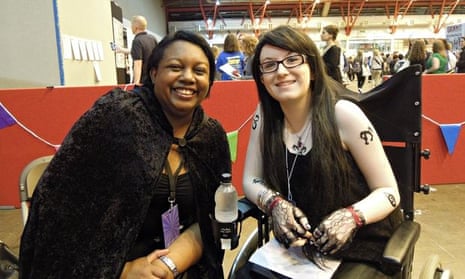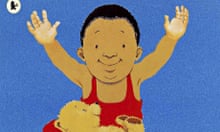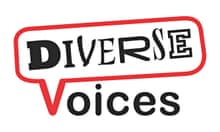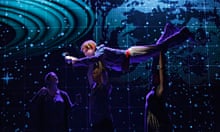My name’s Megan. I’m a teenager, a book blogger, a book addict, an aspiring author and a now-too-old member of this site (sad face). Oh, and I also happen to be in a wheelchair.
Sorry for that little introduction, but I just wanted to point out how being in a wheelchair doesn’t define me. And I want people like that in books too: I want normal characters in normal situations, who are either wheelchair-users or cane-users or whatever – I’m really not fussy. I just want those with physical disabilities to be more visible in children’s and teen fiction.
You see, being a book blogger, I like to look for diversity in what I read. I also like to relate with the protagonist. And after four years of blogging, I’ve yet to read a book with a physically disabled lead character. This makes me a little annoyed, because this could quite easily make people like me, teens in wheelchairs, feel like we aren’t the (admittedly somewhat insultingly named) “norm”, that we’re different and not quite right. And everyone knows it’s wrong to make people feel like that.
I mean, YA and children’s books have come a long way. Not that long ago, LGBT characters were totally absent in stories. Now, the number of LGBT characters is growing rapidly – though, of course, it’s still a bit under represented. For example, James Dawson’s amazing This Book Is Gay hasn’t gotten nearly as much publicity as it deserves (hence me mentioning it now… Sneaky publicity bomb…) But people in wheelchairs have remained rather absent.
Here’s a sort of funny story about how few disabled people there are in YA books. I attended YALC in August (which was amazing, by the way) and was trying to decide who to dress up as. My brother, who’s a bit of a comic book lover, suggested Professor Xavier from the X-Men. I gave him a look (you know the one - the “Are You Out Of Your Mind” look generally reserved for siblings) and told him that there was no way I was going as a bald guy. He countered by pointing out that he’s the only character in a wheelchair. I retorted, oh-so-intelligently, by exclaiming, “BALD!” But the problem is, he’s actually right: Xavier is the only disabled character you’d recognise on sight. And that sucks, doesn’t it?
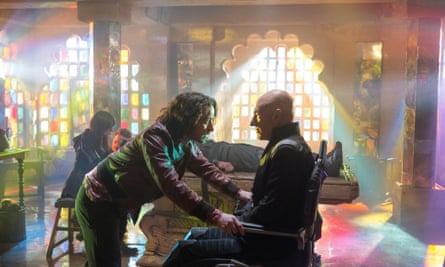
Now, I’ve been wracking my brains really, really hard trying to think about characters who are in a wheelchair or are physically disabled. After lots of thought, I came up with three, adding two more after reading a list by the author Kim Wood.
These characters are Cousin Helen from What Katy Did; Professor Xavier from the X-Men comics; Augustus Waters from TFIOS; Deenie from Deenie by Judy Blume; and finally and the most recent of the bunch, my favourite Charley from Bodyguard by Chris Bradshaw (she’s awesome)… But that’s it!
The Paralympics a couple of years ago really raised the profile of those with physical disabilities - Channel 4’s show The Last Leg in particular is a brilliant product of the games and has led to more understanding of different disabilities and how to approach them: their introduction “We’re three men with four legs” always kills me! They’ve also helped to dispel any notion that disabled people can’t do everything able-bodied ones can or that anyone in a wheelchair is automatically not as capable or clever.
And all of this is great, but I think we need more. We need characters in books who are in wheelchairs or who use a cane or are missing a limb or have some kind of condition or something. But I don’t want “problem” books. I don’t want it to be all about how hard it is being in a wheelchair. I want something normal. For me, of course, normal tends to include dragons and witches – but you see my point… Well, other than the fact that my idea of normal is seriously bizarre… I just want something fun for me to read that has someone in a wheelchair as one of the main characters. I really don’t think it’s too much to ask.
You see, we all want to be able to relate to characters and if there’s a huge lack of a certain kind of person in books, then there’s going to be a huge number of people who are unable to truly relate. And this doesn’t just go for disabled characters – it goes for all the kinds of diversity talked about over the course of this week.
And it’s not just about relating with someone like you – it’s also about learning how to relate with those who aren’t like you. It’s about learning what it’s like to be a boy or gay or black or able-bodied when you’re a straight, white wheel-chair bound girl. I can’t remember who said it, but it’s all about walking a mile in someone else’s shoes. And if all kinds of people aren’t represented in kid’s books, we’re not going to be able to understand them the same way - or even see them the same.
Benjamin Zephaniah said in a recent interview (that you can see here as part of diversity week!) that: “If you see things in the world that you don’t like, you’re not happy with, you cannot complain about it if you haven’t got up and tried to do something about it.” So this is me. Trying to change it. Which is why I can complain.
Which is why I want to set you all a few challenges. I want you to read something with a main character like you. I want you to read something with a main character who is the complete opposite of you. And finally I want to see if you can find any more books with a disabled character (because I really can’t). And then you report back to this site childrens.books@theguardian.com – maybe even send in some reviews – and tell us.
Find out what else is happening during the Guardian children’s books diversity week here.
Your suggestions
Cinda
Adam Gryphon is not the lead character, but is a fairly major character (and one of my favorites) in my Seven Realms series for teens. He uses braces and a wheelchair due to a magical accident when he was a child. He’s also a wizard and a member of the Wizard Council and plays a key role both as a faculty member at the Academy at Oden’s Ford and as a player in the ruthless politics of the Fells. Adam first appears in The Exiled Queen, and is also important in The Gray Wolf Throne and The Crimson Crown.
Vijay
I wanted to let you know that a new publisher Red Giant Entertainment is coming out with a new story called AMPED. The story of AMPED goes something like this: what begins as a government-sponsored program to give mobility to debilitated young patients results in six teen minds trapped in android bodies that nefarious forces are hellbent on acquiring. Now it’s up to them to save themselves while trying to save the world. AMPED is being given away for FREE (1 million copies per month) at you local comic book shops and Toy r Us starting this DECEMBER.
Emily, Fashionyesta blogger
